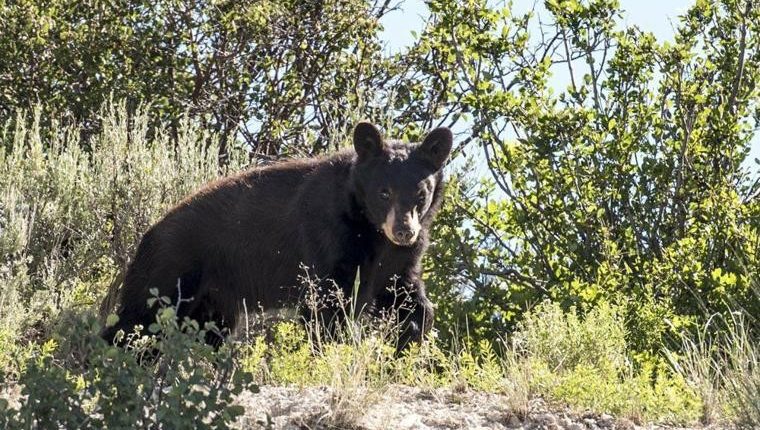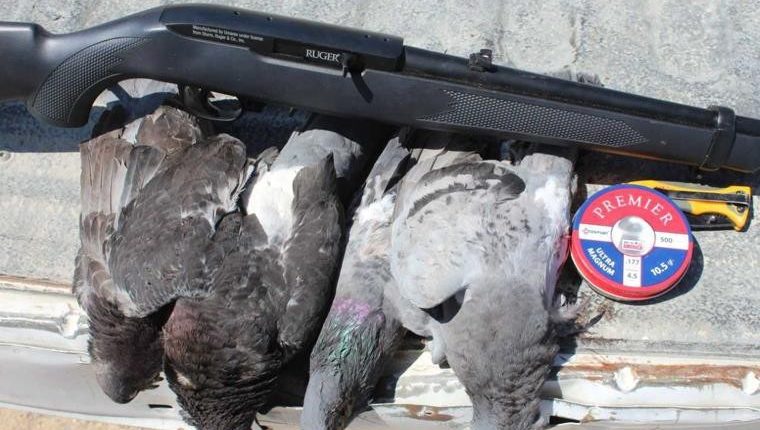At the turnoff toward Forest Service road 377, a fluorescent pink sign trimmed in zebra-print tape announced “Women Only Weekend” in 2-inch-tall capital letters. A short drive up the road, more than a dozen women donned hard hats, slung Pulaskis and saws over their shoulders and headed out on the overgrown Cottonwood Trail about 30 miles east of Boise.
For two days in early June, the women installed water bars to drain soggy terrain, reinforced dirt slopes and trimmed brush and trees — typical trail maintenance. But the all-female crew is less typical of the Idaho Trails Association maintenance trips, the bulk of which are co-ed projects that the trail preservation group organizes statewide.
ITA board member Pam Bond started the Women-Only Weekends last year in hopes of helping women build confidence in their wilderness skills. The two trips she organized in 2018 filled up quickly, prompting four more for the 2019 season and making it clear that Idaho women aren’t looking for their place in the outdoors — they’re creating it.
“Years ago … I felt a need, where women wanted to be out doing this stuff but they didn’t want to learn it from their boyfriends or their dads,” Bond said. “So women started lifting each other up.”
WOMEN IN THE OUTDOORS
Outdoor recreation historically has been majority-male, but the number of women participating has increased over the years. Recently some studies, like the Outdoor Foundation’s annual Outdoor Participation Report, show a nearly equal percentage of male and female recreationists (the number has held steady at 46 percent female to 54 percent male for about the last decade), while other research found women are still underrepresented in the wilderness.
Women’s outdoors groups aren’t exactly new. Some, like Great Old Broads for Wilderness, began in the 1980s. In Idaho, the last several years have seen a spate of new groups form, from local branches of national organizations to informal Facebook groups. Idaho now boasts chapters of Girls Who Hike, SheJumps and Bold Betties, along with local groups and tournaments like Dirt Dolls, Vertigals and Women With Bait. The Boise REI store offers women-only classes on bicycle maintenance, backpacking and more.
Vivian Chan, who started the Whitewater River Chicks Facebook group, said she thinks social media has spurred women to carve out more spaces in the outdoors thanks to the ability to plan events or connect remotely.
“I think social media is probably 100 percent responsible for women being involved in recreation,” Chan said. “From 10 years ago, it is exponentially different.”
GETTING OUTDOORS WITHOUT THE INTIMIDATION FACTOR
Bond, who spearheaded the Women-Only Weekends, said the wilderness world can be an intimidating one to join.
“I kind of grew up working for Fish and Game … and it’s a fairly male-dominated industry,” Bond said. “I saw even then that men and women handle situations they’re uncomfortable with very differently.”
On maintenance projects like the ones ITA organizes, men are often more familiar with the tools — more likely to jump right in even if they aren’t familiar, Bond said. While the majority of people in the outdoors are friendly, helpful and non-judgmental, she said, it can be tough to try something new when you feel that you’re surrounded by experts.
“Sometimes you feel like you’re being judged even if that judgment is all internal,” Bond said. “I had a lot of women saying they didn’t think they could do (trail maintenance), they weren’t strong enough, it’s a man’s job. I wanted there to be a good, entry-level option for women.”
The idea is to teach women the basics, like how to wield those Pulaskis and saws, and remind them that brute strength isn’t the only way to tackle tasks like moving large rocks.
“It’s just nice to be around a bunch of ladies learning,” said Katey Jones, one of the women who helped clear the Cottonwood Trail. “It’s more comfortable and easier for me to ask questions.”
With their new knowledge in hand, Bond said, women hopefully will feel encouraged to try co-ed projects or learn more skills.
“After these (weekends), I have women who say, ‘I’m going to look at the other trips,’ which is exactly what I wanted,” Bond said.
BOISE WOMAN’S GROUP PROMOTES SELF-RELIANCE ON THE RIVER
One of the first times that Chan, a Boise-based Realtor and whitewater enthusiast, had been rafting was with a former boyfriend and several other men down the Staircase Run on the South Fork of the Payette River, a Class IV rapid.
The boat wasn’t properly inflated, and the rapids were too advanced for the group of beginners. The boat “tacoed,” Chan said, flipping up on both ends and dumping all of the occupants into the churning water.
“I got dragged through the rocks,” Chan said. “I couldn’t take a breath. We all almost died.”
They all survived after being pulled from the water by rescuers, but Chan didn’t raft again for three years. When she finally decided to go back to the sport, she wanted to be in control of her own safety.
“I thought: ‘I’m going to learn myself. I never want to rely on another person again,’” Chan said. “I think if we all have that attitude, especially women, we can do so much. Just because (the person you’re with) is a man doesn’t mean they know what they’re doing.”
Chan certainly knows what she’s doing now. Her Whitewater River Chicks Facebook group has grown to more than 1,100 members and offers unique resources for female whitewater rafters and kayakers — such as suggestions on the best gear for women, thoughts on how long one should continue rafting while pregnant and tips on handling sexual harassment on the river.
Chan also hosts several “Flip N Swim” clinics each year on Idaho waters, teaching women how to right a boat that’s capsized, pull themselves back into a raft and safely navigate rapids if they find themselves in the water. Like Bond, she said the women-only environment feels less judgmental for many participants.
“When you have women empowering women, it’s less intimidating,” Chan said. “That’s why you’re seeing these groups come up.”
And while some women worry they don’t have the strength or athleticism for activities like rafting, Chan said women often make better rafters.
“It doesn’t matter how big or strong you are,” Chan said. “You’re at the mercy of Mother Nature. Men try to muscle through everything, where women are more likely to finesse and read the water.”
WOMEN’S OUTDOORS GROUPS ARE ‘COMMUNITY … NOT AN EXCLUSIVE THING’
Though Becca Aceto is still fairly new to hunting, she’s already working to bring other women to the activity as an ambassador for Artemis, a National Wildlife Federation program dedicated to connecting and educating sportswomen.
In April, Artemis held a turkey hunting camp in Idaho’s Nez Perce-Clearwater National Forest, where several women gathered to talk conservation and, of course, bag some birds. Unlike some of Idaho’s other female-focused outdoors events, the camp wasn’t meant to be a beginner’s primer. Instead, it served to connect female hunters, who are still significantly outnumbered by men.
“We had women there who’ve been hunting their whole lives and never hunted with another woman before,” said Aceto, who helped organize the camp. “Often, women who hunt have this preconceived notion that maybe it’s not their cup of tea (to hunt with other women).”
About 10 percent of all hunters are women, according to a 2016 U.S. Fish and Wildlife Service report. In Idaho, the number of female hunters is on the rise (in stark contrast to the declining number of male hunters). In 2018, 20 percent of Idahoans holding hunting or combination hunting/fishing licenses were female, according to Idaho Fish and Game.
Aceto has hunted and fished alongside men and women. She said Artemis isn’t meant to turn the boys’ club into a girls’ club.
“I’m 100 percent for creating a space, not to tell people what to do, but to tell them what options they have,” Aceto said. “It’s creating a space for women that hasn’t existed here for that long.”
“The whole point isn’t to further polarize things,” she added. “It’s to create camaraderie and community. I think to a lot of people … they see it as an exclusive thing, and that’s not at all what I’d want it to be. Not every woman is going to flock to (women’s groups), but the ones that do, it’s important for them.”
Bond, of the Idaho Trails Association, echoed that.
“If anyone asks me about (Women-Only Weekends), I say ‘I’m not doing this to be exclusive. I’m doing it to be inclusive, as backwards as that may sound,’” she said.
Aceto said working with Artemis and its many female ambassadors from around the country has changed her perspective on what women’s wilderness groups can look like.
“I was never the person that sought out women’s events,” Aceto said. “(Artemis) is not women supporting women who only speak to women and spend time with other women. It’s a bunch of bad-ass hiking, hunting, picking-plants-from-the-dirt-and-eating-them females. And if I ever felt like I fit into a women’s community, that’s it.”







